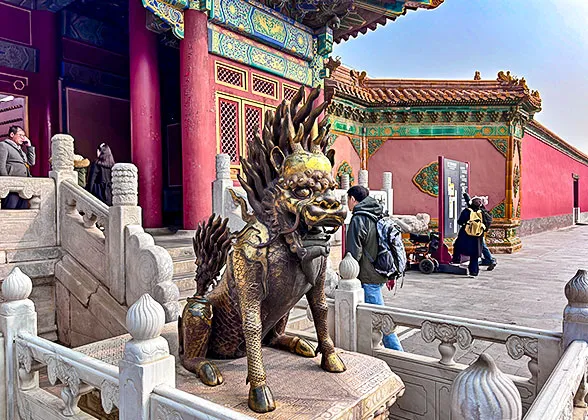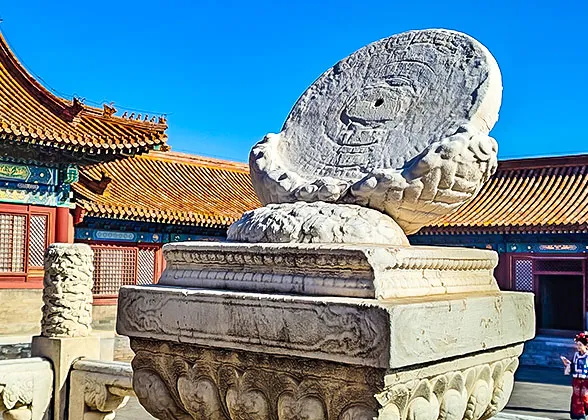Palace of Compassion and Tranquility (Cininggong)
The Palace of Compassion and Tranquility (Cininggong), situated west of the Forbidden City's central axis, was originally built in 1536 for Empress Dowagers (emperor's mother) and now functions as the Sculpture Gallery.
The construction of the Palace began in 1536 and was completed two years later. It was unfortunately destroyed by fire in 1583 but was rebuilt in 1585. Further renovations took place in 1653, 1689, and 1751.
In 1769, Emperor Qianlong transformed the main hall from a single-eaved to a double-eaved roof, giving the Palace its current layout.
 Emperor Kangxi's Profound Respect for Empress Dowager Xiaozhuang
Emperor Kangxi's Profound Respect for Empress Dowager Xiaozhuang  Celebrating Empress Dowager Chongqing's 60th Birthday in the Palace
Celebrating Empress Dowager Chongqing's 60th Birthday in the Palace
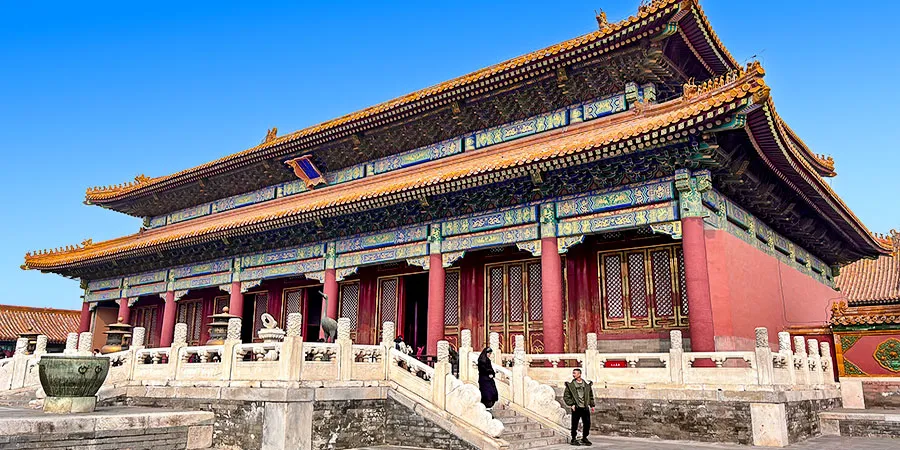 |
| Palace of Compassion and Tranquility |
History
In 1769, Emperor Qianlong transformed the main hall from a single-eaved to a double-eaved roof, giving the Palace its current layout.
From 1536 to 1644: Empress Dowager's Palace
The Palace was constructed by Emperor Jiajing (1507~1566) for his mother, Empress Dowager Jiang (1477~1538).
Emperor Jiajing became emperor after his older brother died without an heir. Upon entering the Forbidden City, he found that Empress Dowager Zhang, his predecessor's mother, already occupied the designated Empress Dowager's palace, the Palace of Benevolence and Longevity (Renshougong). His own mother had no suitable palace and was forced to reside in a side palace, facing a humble position. Seeking a solution, Emperor Jiajing waited for the right moment.
In 1525, the Palace of Benevolence and Longevity was destroyed by fire. Emperor Jiajing delayed its repair for ten years, citing national hardships due to natural disasters, leaving Empress Dowager Zhang without her own palace.
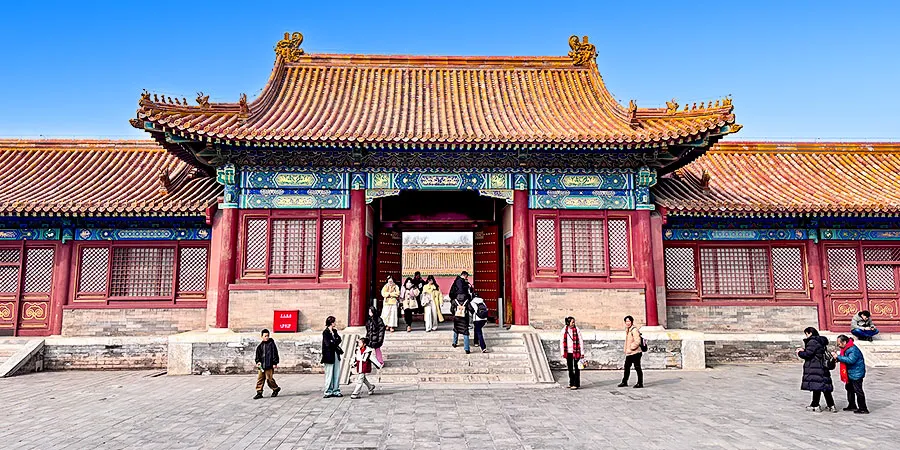 |
| Gate of Compassion and Tranquility |
In 1536, Jiajing seized the opportunity to build the Palace of Compassion and Tranquility on the Palace of Benevolence and Longevity's site for his mother. He also constructed the smaller Palace of Compassion and Celebration behind it for Empress Dowager Zhang.
The size and grandeur of the Palace of Compassion and Tranquility clearly reflected the higher status of Empress Dowager Jiang, and it has since served as the residence of the Empress Dowager.
From 1653 to 1687: Highlight of the Palace - Empress Dowager Xiaozhuang
Empress Dowager Xiaozhuang (1613~1688), a famous strong woman in Chinese history, resided in the Palace of Compassion and Tranquility. She began as a concubine of Huang Taiji (1592~1643), the Qing Dynasty's founder. After his death, she guided her six-year-old son, Shunzhi (1638~1661), to the throne and later supported her grandson, the young Kangxi emperor (1657~1722).
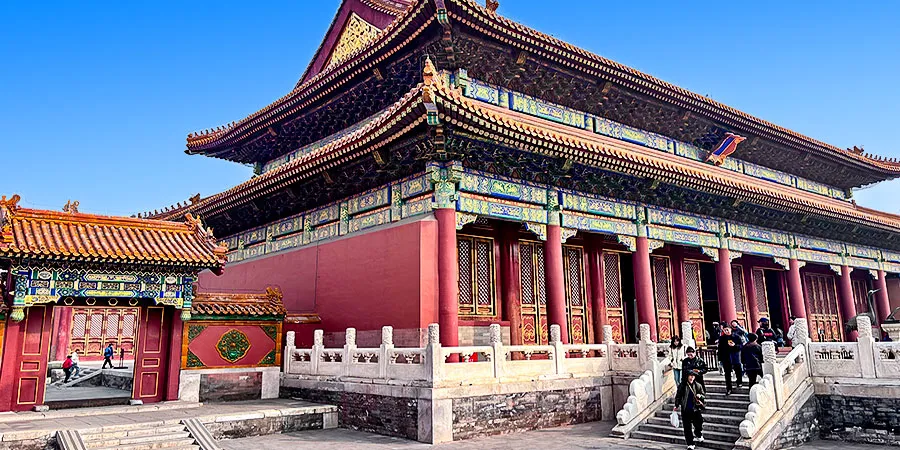 |
| Palace of Compassion and Tranquility |
At the Palace, she played a pivotal role in stabilizing the dynasty. Together with Kangxi, she devised plans to neutralize powerful ministers and quell rebellions launched by three feudal lords, thereby stabilizing the Qing Dynasty's rule. Xiaozhuang can truly be considered one of the key figures in the founding of the Qing Dynasty.
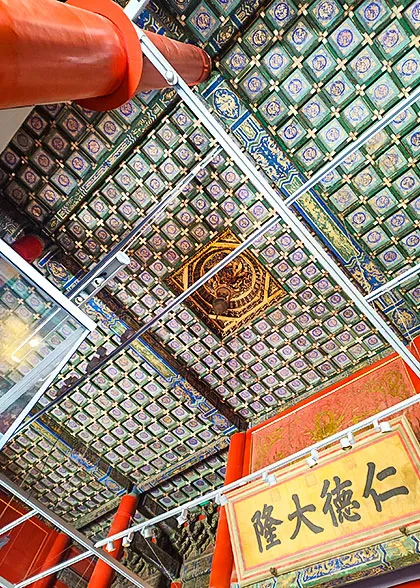 |
| Ceiling of the Palace |
Emperor Kangxi, greatly appreciative of Empress Dowager Xiaozhuang's support, visited her twice a day in the Palace of Compassion and Tranquility to show respect.
In 1687, when she was critically ill, Kangxi was deeply saddened and stayed by her side night and day in the Palace, ready to respond to any sound from her. He also prayed for her at the Temple of Heaven (Tiantan), his tears flowing as he read the prayer, moving all who witnessed it.
From 1687 to 1911: Venue for Empress Dowager's Ceremonies
Out of respect for Empress Dowager Xiaozhuang, seldom other Empress Dowagers resided in the Palace of Compassion and Tranquility later. Instead, it became a dedicated venue for major ceremonies involving empress dowagers, including birthday celebrations, honorary title presentations, festive greetings, imperial decree readings, treasure presentations, and princess weddings. Among these, the birthday celebrations were undoubtedly the grandest.
In 1751, Emperor Qianlong (1711~1799) hosted a grand celebration for his mother, Empress Dowager Chongqing (1693~1777), in the Palace of Compassion and Tranquility. The Palace was filled with treasures, and Qianlong, along with other royals, kowtowed to honor her. Despite his supreme state, Qianlong even danced for his mother in vibrant attire, holding a wine goblet, with his sons and grandsons following suit.
Today: Sculpture Gallery
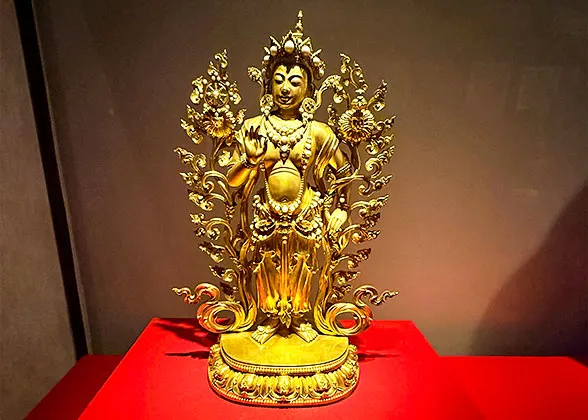 |
| Buddha Statue Exhibited in the Palace |
Since 2016, the Palace of Compassion and Tranquility has been open to the public as the Sculpture Gallery of the Forbidden City, showcasing artifacts such as terracotta figurines, painted brick and stone reliefs, and Buddhist statues. With an exhibition area of approximately 1,375 square meters (14,800 square feet) displaying 425 exhibits, visitors can enter the gallery directly without needing to purchase additional tickets.
What is the Palace made up?
Gate of Compassion and Tranquility
The Gate of Compassion and Tranquility is the main entrance to the Palace. It features a palace-style design, with a pair of gilded bronze mythical creatures, "Qilin", standing guard on either side of the steps, with their hair raised and eyes fixed straight ahead. They serve as protective symbols, embodying people's desire for peace and tranquility.
|
|
Palace of Compassion and Tranquility
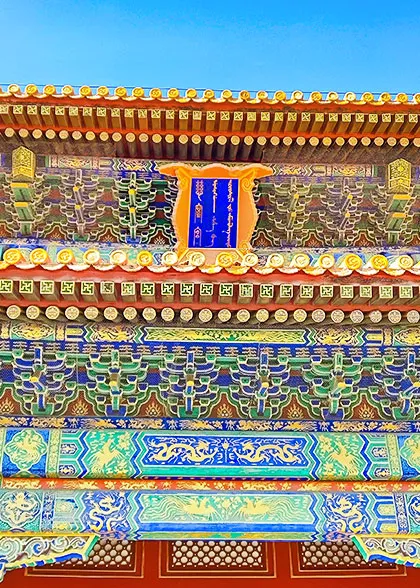 |
| The Palace Plaque |
Surrounded by corridors, the main hall Palace of Compassion and Tranquility stands tall with a double-layered roof covered with yellow glazed tiles, symbolizing the dignity of the Empress Dowager.
Except for Chinese and Manchu, which are the languages usually occur on most of the plaques in the Forbidden City, the plaque atop the Palace’s front door is additionally inscribed in Mongolian, because the Empress Dowager Xiaozhuang, who resided here, hailed from Mongolia.
To the west of the platform stands a lunar dial, serving more as an ornamental and symbolic item than a practical timekeeper. As a symbol of the moon and feminine energy in ancient Chinese yin-yang theory, it highlights the Empress Dowager's supreme status among women in the imperial household.
Great Buddha Hall
The rear hall of the Palace of Compassion and Tranquility is dedicated to Buddhist practices by the Empress Dowager. It is called the Great Buddha Hall due to its abundance of Buddhist shrines, scriptures, statues, and ritual instruments.
Go east back to the Qianqingmen Square and continue the tour along the central axis. Enter through the Gate of Heavenly Purity (Qianqingmen) to see the three major halls of the Inner Court.
Go west to the Hall of Longevity and Good Health (Shoukanggong); go east to the Office of Military Strategy (Junjichu) and Hall of Mental Cultivation (Yangxindian).
Go south to the Garden of Compassion and Tranquility, the auxiliary leisure place for the Compassion and Tranquility Palace.
How to visit the Forbidden City
The One and Only Lunar Dial in the Forbidden City
4 Plaques with 3 Languages in the Forbidden City
Special Caisson Ceiling Designs in the Forbidden City
- Last updated on Oct. 11, 2025 by Jally Zhang -
